Tag: Straight Facts
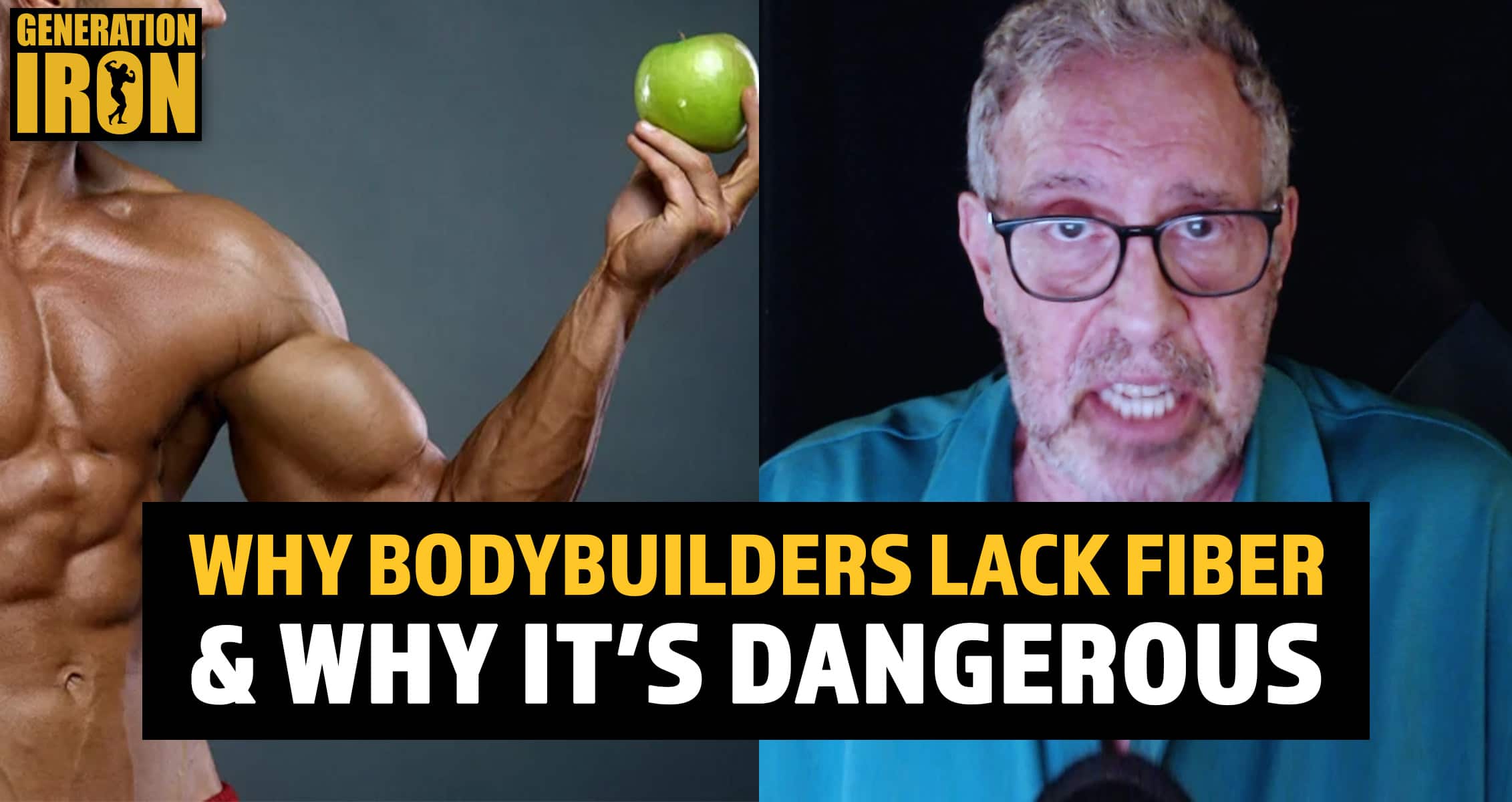
Straight Facts: The Reason Bodybuilders Lack Dietary Fiber… And Why That’s Dangerous
[embedded content]
Jerry Brainum breaks down the straight facts about bodybuilding diets, dietary fiber, and the health consequences of missing this vital nutrient.
It’s often said that bodybuilding is a lifestyle, not just a sport or a hobby. This is made abundantly clear when looking at the extreme detail that goes into a bodybuilding diet. Every single thing put into the body is monitored and adjusted for optimal results in building a perfect physique. However, sometimes a diet perfect for a masterful body is in contrast for what is best in regards to long term health. This is especially true when it comes to fiber – though many don’t often know this. In our latest episode of Straight Facts, Jerry Brainum details the importance of dietary fiber and the health consequences of missing this vital nutrient in the long run.
Dietary fiber is often an overlooked nutrient by the population at large. The most that individuals usually know is that it helps fight constipation and helps with bowel movements. This is certainly true – but there is so much more to dietary fiber than just making your bathroom visits more pleasant. In fact, it has a massive effect on your intestinal microbiome in ways that can have a major impact on your overall health in the long term.
Jerry Brainum knows about this first hand, as he’s faced a medical emergency in his past tied directly to dietary fiber (or lack thereof). Not only that – but as a passionate fan of bodybuilding, he is extremely aware of how little fiber usually exists in bodybuilding diets. This worries him. Which is why this week he goes into extreme detail on how to help boost fiber and the effects it can have. Let’s jump into it.
What does dietary fiber do?
In the most basic terms, dietary fiber helps food and waste move through your system more smoothly. By doing so, it essentially helps cleanse your intestinal microbiome. Your intestinal microbiome is a massive series of organisms that exist in your stomach and intestines. They are directly responsible for how you absorb nutrients and also how you dispose of waste from your body.
Most importantly, recent studies have found that a healthy intestinal microbiome is much more vital to human health than previously thought. It appears that the microbiome is in direct “communication” with your immune system. An unhealthy microbiome seems to lead directly to a weaker immune system.
Unhealthy microbiomes have also shown to increase risk of colon cancer and various other intestinal diseases.
How much dietary fiber should you take?
The CDC recommends that individuals take approximately 14 grams of dietary fiber per 1000 calories consumed. So if you were to consume generally 2000 calories per day – you should eat around 28-30 grams of dietary fiber.
In an era of processed foods – this goal is much harder to reach for most Americans. But beyond the general public, Jerry Brainum explains that typical and popular bodybuilding diets leave much less room for dietary fiber.
Why do bodybuilders have low dietary fiber?
In modern bodybuilding, diets such as carnivore diets, ketogenic diets, and other low-carb diets have become very popular. These diets often do not provide the daily dietary fiber needed for a healthy intestinal microbiome.
This does not mean these diets are inherently bad. In fact, these diets are designed to only be used in the short term. Jerry Brainum explains that being one one of these diets for one month, three months, or even six months will likely do little damage to your overall health. But if you stick longer than six months – and push a low-carb diet into a permanent eating lifestyle – you may be in for some serious health risks in the long term.
As mentioned, low fiber can contribute to an increased risk of colon cancer and can also weaken your overall immune system. Leaving bodybuilders (and any individual low in dietary fiber) open to getting seriously sick more often.
In addition to this, Jerry Brainum cites some studies that show high-fiber diets have shown increased heart health, lower blood pressure, and (as stated previously) an improved immune system.
Supplementing your diet with fiber
So what is a bodybuilder to do if he or she wants to build better health but stay on track for optimizing their physique? Jerry Brainum suggests dietary fiber supplements taken with water. They are relatively tasteless and easy to add to a meal or simply with a glass of water.
Jerry Brainum also suggests starting off slow. If you jump in with 30+ grams of dietary fiber in a supplement, you’ll get extremely gassy and bloated. It’s uncomfortable and might entice you to stop supplementing with fiber. Instead, start small and slowly build up so your microbiome adjusts to the dietary change.
Wrap Up
Dietary fiber is not an exciting or often discussed nutrient when talking about healthy diets. But it’s extremely important and can be a contributing factor to various ailments. Since bodybuilders are often lacking in dietary fiber – it’s important to take this information and these suggestions seriously. Just get used to going to the bathroom a bit more often as part of your daily schedule.
You can watch Jerry Brainum go into complete detail about dietary fiber and bodybuidling in our latest episode of Straight Facts above. Make sure to stop by each Wednesday for new episodes every week!
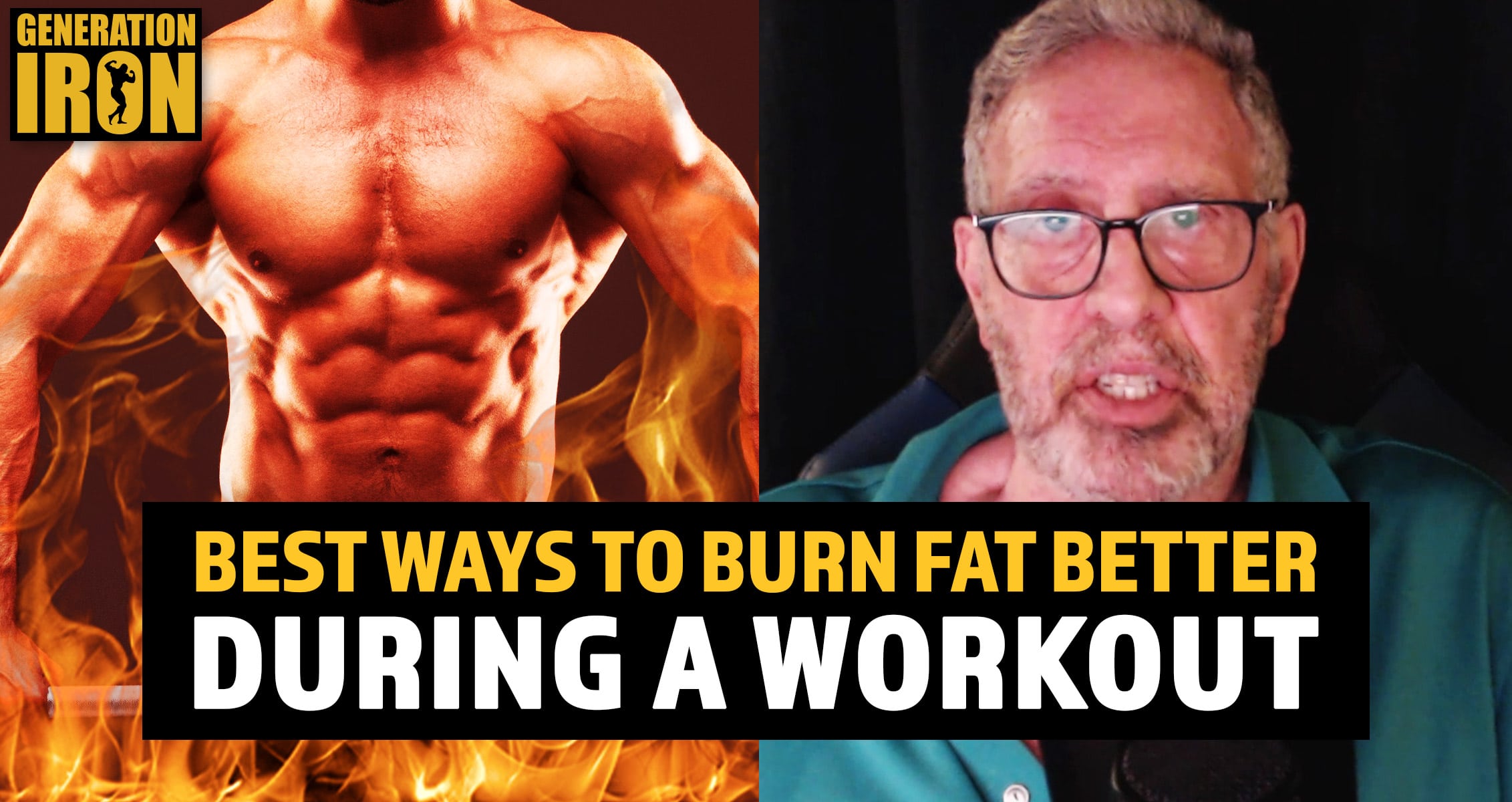
Straight Facts: What Determines How Much Fat You Burn During A Workout?
[embedded content]
Jerry Brainum breaks down optimizing fat oxidation during a workout in this week’s Straight Facts.
Diet is the most important factor to losing weight. But that doesn’t mean you can’t help improve your fat burning capabilities via workouts and aerobic exercise. Yes, exercising can help you add a bit more fat loss into your goals – but it’s not always easy. Basic exercise does not guarantee fat loss. This is a fact that has frustrated many across the globe as they try to lose pounds. In our latest episode of Straight Facts, Jerry Brainum breaks down the key factors that help increase fat oxidation and improve fat loss during a workout.
Jerry Brainum starts today’s episode with a very important reminder. What you eat is the key determining factor in how much fat you burn or gain. While exercise can help burn fat – even the most perfectly performed aerobic training routine will only bring minimum fat loss. If you’re looking to truly transform your body and weight – a lifestyle change in your diet is necessary.
With that being said, fat loss via exercise can also be very helpful alongside a proper diet. Which is why Jerry Brainum uses research studies to help break down the key determining factors in burning fat during a workout. Let’s jump into the main points.
Carbohydrates, workouts, and fat loss
The key to losing fat while exercising is fat oxidization. So for the entirety of this episode, Jerry Brainum breaks down the best ways to improve fat oxidization during your training routine. One of the most important factors to consider is how many carbohydrates you consume before a workout. Carbs provide fuel and energy for your body. So when you exercise while loaded on carbs, your body will chose the carbs over fat to fuel your workout.
On basic terms, this means that if you exercise while loaded up on carbohydrates, you will burn less fat. However, in practice this seems to make little difference. Studies have shown that fasted cardio does not help increase fat loss.
HIIT training and fat loss
Nearly everyone knows that aerobic exercise is the key to burning fat through exercise. But there are various ways to train aerobically. Which training style or strategy is best to burn the most fat? Typically, studies have shown that your body starts truly oxidizing fat over carbs after exercising for more than 60-90 minutes. Jerry Brainum wouldn’t recommend that individuals train every day for over 90 minutes though.
Instead, High Intensity Interval Training (aka HIIT) has shown to bring the best benefit to weight loss. HIIT training is so high intensity, that your body wants fast fuel. This would come from carbs. That sounds bad, right? However, studies have shown that HIIT training increases your metabolism for hours after you finish exercising. This leads to fat oxidation and fat loss for a few hours throughout your day.
The key with this, though, is to ensure you are truly performing HIIT training correctly. The goal of HIIT is to bring up your heart rate to 90% of its max. If you aren’t pushing hard enough to hit that point – you won’t see those same fat burning boosts.
An additional note for those focusing on aerobic exercise. Studies have shown that standing exercises burn fat better than sitting. So it’s best to move from cycling to running if possible.
How Your Environment Helps You Lose Fat
Studies have shown that if you are training under very hot temperatures, that your body will oxidize fat less. This is only slight – but something of note. On the flip side, Jerry Brainum explains that some studies have shown extremely cold environments help boost fat loss. This is due to your body using fat and turning it into heat for your body.
Fat Burner Supplements and Workouts
Fat Burner supplements are everywhere these days. But do they really work? Jerry Brainum warns that fat burners are not miracle pills. They do not burn fat at all. Instead, they help mobilize fat. So in order for a fat burner to work – you absolutely need to exercise. Taking a fat burner but not exercising will do absolutely nothing for your fat loss journey.
In addition to fat burner supplements, caffeine is also a great substance to help mobilize fat. This is good news for all those coffee drinkers out there. Studies have shown that approx. 3-4 cups of coffee per day can help improve fat loss when you exercise.
Wrap Up
Jerry Brainum goes into far more detail about the best factors to help improve fat loss during a workout. However, as he states at the very top – exercise is the least effective way to lose weight. A proper diet and lifestyle change is most important to meeting your weight loss goals.
However, if you want to give yourself an extra edge alongside your diet – Jerry Brainum’s guide using past research studies will help you optimize your fat loss during a workout. Make sure to watch the entire episode of Straight Facts for the full details above. And don’t forget to visit Generation Iron every Wednesday for new episodes each week!

Straight Facts: Should Competitive Bodybuilders Have Tattoos?
[embedded content]
Jerry Brainum breaks down the risks of having extensive tattoos as a competitive bodybuilder.
Tattoos are far more accepted today than they once were. This is also clear in the world of bodybuilding – where it’s become more common for a competitor to step on stage with more extensive tattoos covering their physique. But do extensive tattoos end up hurting their chances for a victory on stage? And are there other less known risks as a bodybuilder? In our latest episode of Straight Facts, Jerry Brainum discusses the potential health risks and competition risks of extensive tattoos in bodybuilding.
Jerry Brainum doesn’t want to upset people. He also doesn’t want to be overly critical of those who decide to express themselves with tattoos. That’s why before Brainum dives deep into this episode, he makes a point to not condemn those with tattoos. Brainum does not believe that value or personality of a person should be judged based on what someone has on their body.
However, in the world of competitive bodybuilding, tattoos have a more direct effect on how a physique is perceived. So rather than try to judge the morality of tattoos – Brainum wants to focus the more objective effect they can have on competitive bodybuilders. Let’s break it down.
Can extensive tattoos negatively impact competitive bodybuilders?
Jerry Brainum first explains the distinct difference between getting a simple tattoo and getting extensive one. Brainum does not believe having one or two tattoos on your body will have a drastic effect on a bodybuilder. However, extensive ones such as full body or “sleeves” covering large portions of the physique can, theoretically, cause more of a problem.
Jerry Brainum points out that the goal of competitive bodybuilding is showcase your physique and compare it to others. Extensive tattoos can make it harder for a bodybuilder’s definition to be seen. They can hide or obscure muscle definition – especially dark tattoos with plenty of fillings with black ink. This is less a personal taste argument and more a logical one. If a judge cannot see the details of your physique – the judge can’t score you as high as others standing next to you on stage.
Are there possible health risks from tattoos?
Beyond the competitive bodybuilding stage, there are other small but possibly dangerous risks to consider before getting extensive tattoos. Much as Jerry Brainum explained how they can obscure conditioning, they can also obscure or hide early signs of skin cancer. Skin discoloration or moles are warning signs that should always be checked out. This might be harder to notice with extensive dark tattoos obscuring the skin.
Jerry Brainum also points to a study that shows extensive tattoos can decrease your sweat rate by 50%. For bodybuilders, this can be a more damaging issue. Less sweat might make workouts more difficult. Not only that – but on competition day the hot lights and long periods of comparison rounds can become more challenging.
Lastly, Jerry Brainum points out some studies that showcase the toxic risks of tattoos. While Brainum himself points out there are very few anecdotal stories of people getting sick from them – it’s not impossible.
Many studies have shown that risks of infection or disease can occur if the tattoo artist does not follow proper cleaning procedures on the needle while tattooing. In addition to this, other studies have shown certain inks having contaminants including carcinogens. Again, the risk is extremely low for traditional or simple tattoos. But for those covering large portions of their body with heavy filling of color – the risk increases.
Wrap Up
Ultimately, Jerry Brainum reiterates that he doesn’t want to use scare tactics to villainize tattoos. While he thinks society should not consider tattoo inking as benign, it is extremely low risk overall. However, a competitive bodybuilder should think a bit harder as to whether or not to get extensive tattoos. It can potentially affect your sweat rate and make training more challenging. But worst of all, it can make your conditioning harder to see on the stage.
You can watch Jerry Brainum go into full detail about tattoos and bodybuilding in our latest episode of Straight Facts above. Make sure to check back every Wednesday for new episodes of Straight Facts!
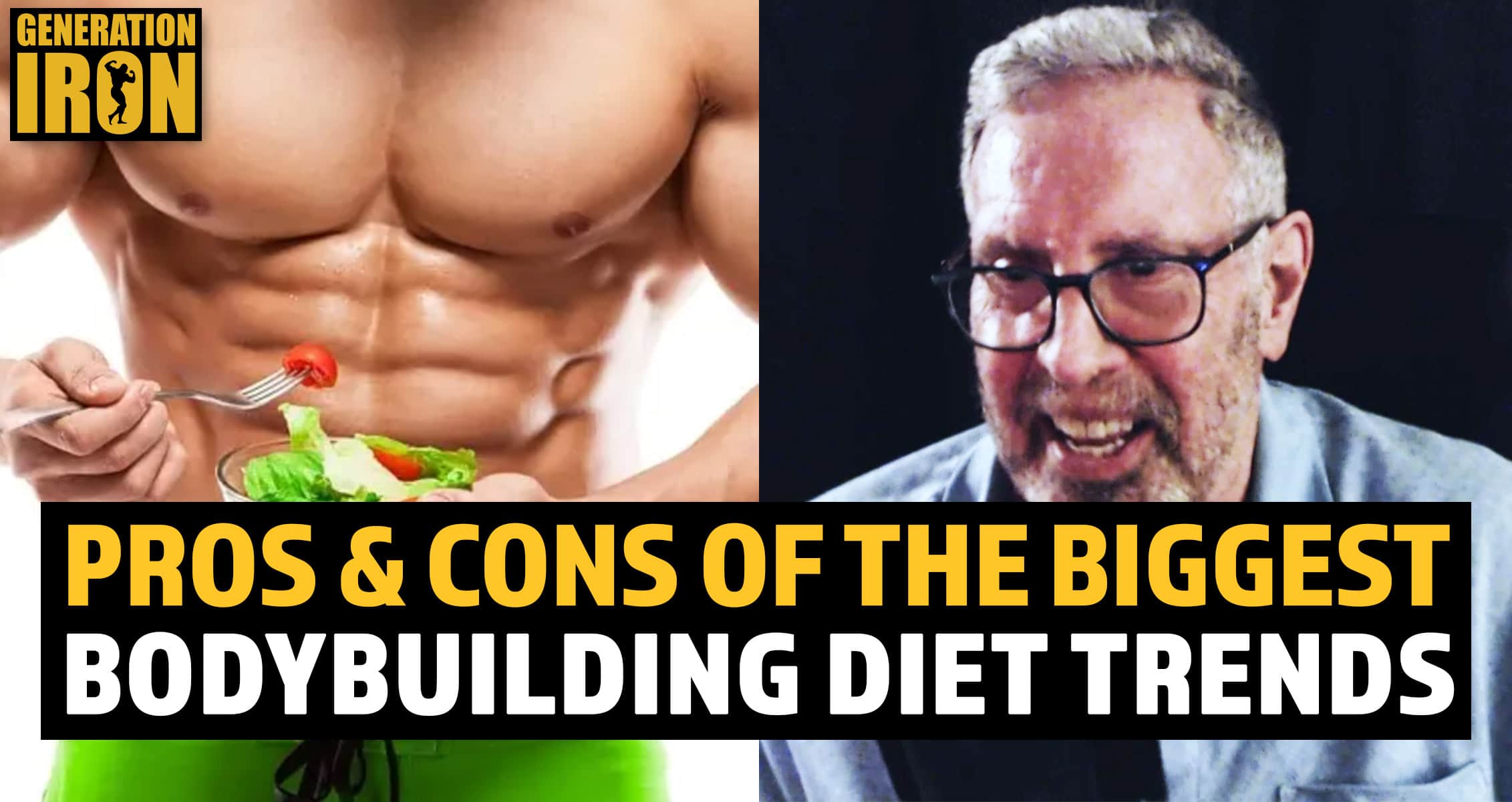
Straight Facts: Pros and Cons Of The Most Popular Bodybuilding Diets
[embedded content]
Jerry Brainum shares the straight facts on the most popular diets in bodybuilding – which is the best?
The benefit of living in a true information era is the vast amount of variety we can access. Today, the average person is able to know so much more about nutrition, health, and diets than ever before – if they choose to. The downside, of course, is that there can be too much information. The boom of diet trends begs the question – which are legit and which are the best? In our latest episode of Straight Facts, Jerry Brainum uses a combination of vigorous research and personal anecdotes to break down the pros and cons of today’s most popular bodybuilding diet systems.
The common perception is that dieting is easy in theory but hard in practice. The key aspect of losing weight is to consume less calories than your resting metabolic rate. But the hard part is to actually pull it off and not lose your willpower. Even worse, this simplified mentality turns out to be not necessarily true. Modern nutrition science has shown that losing weight can become vastly complicated depending on your genetics. Many struggle to eat well and not give into cravings – but there are also those who diet correctly but seem to still struggle.
In today’s internet era, it’s easier to research and discover a wide variety of diets. Many of them work – but only when done correctly. Others are scams looking to take a dollar out of your wallet. It can be hard to decide what works and what doesn’t. That’s why we turned to Jerry Brainum to break down and rank the most popular diet trends currently in bodybuilding and fitness. Let’s jump into it.
Paleolithic Diet
The Paleolithic diet is a bit of a gimmick named diet plan. The goal is to “eat like the cavemen did.” Jerry Brainum explains that the reasoning behind this diet is that the human race, despite its many evolutionary accomplishments, are still very similar genetically to the cavemen of eras past. So if we go back to the simplicity of a caveman diet – we’ll be healthier and leaner.
Despite the gimmick of it’s name, Jerry Brainum believes that this diet is actually pretty decent in keeping you health and lean. The diet focuses on meat, nuts, and berries. Foraging foods plus hunting foods. No grain. No wheat. No diary. No processed foods.
Jerry Brianum explains that the biggest downside is getting the full spectrum of nutrition for your long term health. Calcium can be hard to come by without dairy, for example.
Carnivore Diet
The carnivore diet focuses on only eating protein. No fruits or vegetables. Jerry Brainum points out that the biggest issue with this diet is the lack of dietary fiber from veggies. Fiber is a big part of our microbiome in our stomach. While this was less considered in decades past, modern science has shown that our microbiome plays a massive role in our health and our weight loss/gain.
Jerry Brainum explains that most recent studies have also drawn a direct link between a healthy microbiome and immunity to illness. Healthier stomaches have been proven to show more resiliency against disease and getting sick.
Low Carb/High Fat Diet (Keto Diet)
This diet focuses on cutting carbs from your diet and increasing dietary fat. While this might sound wrong (where do you get your energy? Isn’t fat bad?). Ultimately this is a rather powerful and successful diet.
Jerry Brainum has gone into extreme detail in a previous episode discussing keto diets. Keto diets are an extreme form of a general low card/high fat diet. The key here is that with a lack of carbs in your system, the extra fat is transformed into energy. Thus this is not stored as fat in your body and you lose weight.
Jerry Brainum believes this to be a strong diet – but only in the short term. He does not recommend this kind of diet to be year-long. It can also be a hard diet for bodybuilders looking to bulk up. Rather, this diet is best for bodybuilders in contest prep mode looking to get lean.
Jerry Brainum believes that the keto diet is likely the best diet for losing body fat percentage.
Vegan Diet
Growing extremely in popularity over the past decade, the vegan diet has many positives in terms of ethical food choices and healthy food options. The only problem, as Jerry Brainum explains, is that a vegan diet can be very unhealthy if you don’t do it right. There are many vegan friendly foods that are simply empty of nutrients. So it’s important that a person interested in veganism focuses on doing it the right way.
On top of this, many supplements are needed to further get the full spectrum of nutrients for long term health. Jerry Brainum explains that avoiding all meat with no supplements is ultimately bad for your health.
In addition to this, a vegan diet can be very challenging for bodybuilding. Jerry Brainum does not find it impossible, but it adds a new level of challenge that can put you at a disadvantage against others not on the same diet.
Mediterranean Diet
A mediterranean diet has a focus on extra virgin olive oil in meals and cooking. It also focuses on moderate drinking of red wine. In addition to this – the main food courses are usually fruit and vegetable heavy with only minimal fish and meat.
Jerry Brainum beileves that the mediterranean diet is the healthiest diet you can commit to in the long term. It’s a realistic year-long diet providing a full spectrum of nutrients to keep you health and, if done correctly, you’ll stay lean and heart healthy as well.
The mediterranean diet can also work for bodybuilding if adjusted to include more protein.
Balanced Diet
A balanced diet is what you likely hear a lot about in commercials. It’s the recommended diet by most doctors. Basically, it asks that you ensure you have a healthy dose of each kind of food type to accrue all the necessary nutrients without needing supplementation.
However, Jerry Brainum points out that a balanced diet is so inclusive that it can be hard to stick to. In theory, this diet is perfectly healthy, but it’s rare for a person to regularly fit the entire food pyramid into their daily diet without issue.
Meal Replacement Diet
This last one is a bit extreme, but Jerry Brainum wanted to touch upon it as he also tried this kind of diet when he was younger. A meal replacement diet is when you replace all of your meals with a meal replacement product. This is usually some sort of shake or a diet bar.
Jerry Brainum explains that there are many meal replacements out there that can be scams or crammed with sugar. So research is necessary to find a more formidable healthy option. But on top of this, replacing all of your meals (or even consistently some of your meals) with a product like this is not advised in the long term.
Jerry Brainum explains a product he tried when he was younger which lost him 40 pounds very quickly. It was effective – but to use this as a forever diet is extremely ill advised. Brainum also jokes that the version he took decades ago was likely pumped with an appetite suppressing drug that was not allowed to the larger market.
A meal replacement can be good for short term crash dieting or for moments when you are traveling and need a quick but healthy option for eating on the go. But it should not be seen as a viable diet in the long run.
Wrap Up
The key takeaway here is that no diet is perfect. But most importantly, the biggest error that happens with diets is on the user side. It’s very easy to commit to a diet and not follow it fully. Some even cheat on their diets without realizing it. Jerry Brainum’s breakdown of the biggest diets in bodybuilding today can help you stay more focused and find the right diet that works best for you.
You can watch Jerry Brainum go into full detail in our latest Straight Facts episode above. Make sure to swing by each Wednesday for new episodes every week!
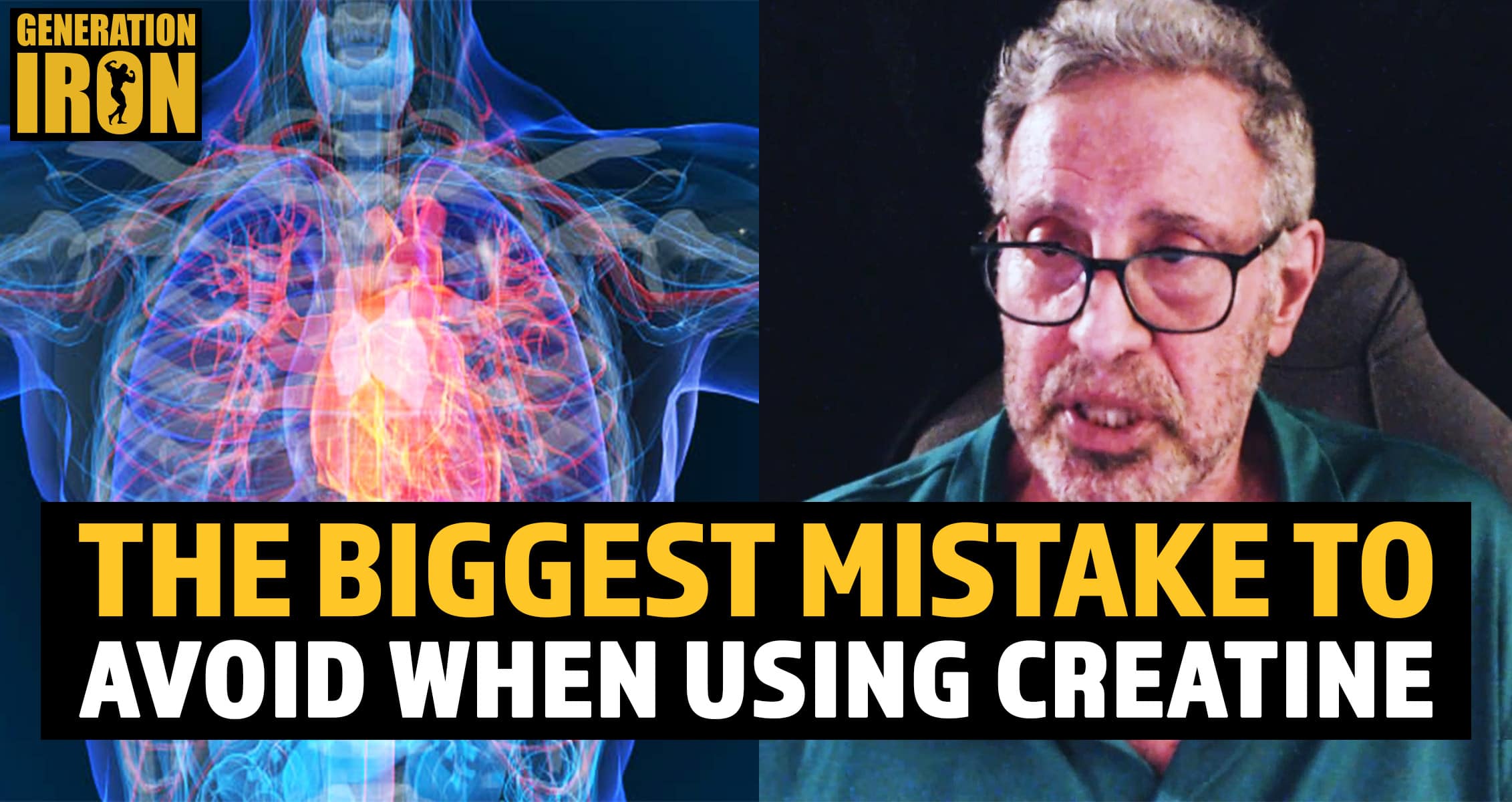
Straight Facts: The Biggest Mistake To Avoid When Using Creatine
[embedded content]
Jerry Brainum breaks down the realities behind reported side effects in creatine.
Creatine is a powerful and effective supplement for helping to increase muscle growth with very little and few side effects. In fact, it’s somewhat surprising how helpful this supplement can be without being a PED. Of course, this is if you train effectively while using the supplement. However, there have been some reported side effects that might make some lifters stray away from this effective tool. Even worse, there are some reports of more dangerous side effects that might make the supplement seem scary. Are they legit? In our latest episode of Straight Facts, Jerry Brainum breaks down the reality behind creatine side effects – and what you can do to reduce them.
First things first, as far as the FDA is concerned, creatine is a safe supplement to use in your diet. To the uninitiated, some may believe creatine falls in the same category as steroids or other PEDs. This is not the case – and rarely does anyone who even has a basic knowledge of fitness believe this to be true. That being said, there are some side effects that can cause discomfort.
Creatine can often cause gastrointestinal issues, aka stomach pain or bloating. It’s nothing to be seriously concerned about but the discomfort could be enough to make some lifters avoid creatine all together. That’s why Jerry Brainum has decided to break down what causes these side effects – and how to reduce stomach or bloating discomfort. He also addresses more serious health claims that have occasionally sprouted in the fitness industry.
How to reduce creatine gastrointestinal issues
If anyone has relied on creatine to build more muscle, they are probably more than familiar with the feeling of bloating, stomach discomfort, and increased gas (aka farting). But it doesn’t always have to be this way. Jerry Brainum explains that the biggest cause for stomach bloating or discomfort with creatine in dehydration.
Jerry Brainum explains that creatine, when consumed, can lead to further dehydration in the body. Combine that with a hard workout which makes you sweat more than usual – and you can be facing more sever dehydration than usual. This can ultimately be the cause for gastrointestinal problems after taking creatine.
That’s why Jerry Brainum suggests to keep extra care with consuming water when taking creatine. Ensure that you are fully hydrated and consume additional water with your creatine. This may help lower stomach and bloating issues.
RELATED: Check out our official review guide of the best creatine supplements on the market in 2022.
Can creatine be damaging for your health?
Jerry Brainum also addresses one report of creatine causing pulmonary embolism – aka a blood clot that blocks blood flow and can lead to death. While this is not a common held belief, these kind of studies can help spread misinformation and fear regarding certain substances.
As Jerry Brainum describes, the report itself is a case study. Meaning, in this case, it was only reported and studied in one man. A one to one correlation cannot be made to creatine and pulmonary embolisms – because this was not tested and proven in a larger sample set of individuals. In fact, the study itself only states that there is a “possible link” between the two.
Jerry Brainum than details the specifics of the report. The study indicated that a man with no family history of blood clots suffered a pulmonary embolism after increasing his dosage of creatine and then training shortly after. Their argument was that the large dose mixed with exercise led to extreme dehydration which can significantly increase the chance of blood clots.
However, Jerry Brainum points out that this is the only known study taken regarding the connection between creatine and blood clots. While Brainum cannot prove one way or the other himself – his suspicion is that at most the creatine helped contribute to an already underlying but unknown condition.
Brainum further points out that there are hundreds of thousands of people who use creatine. If this was truly a concern or real correlation – there would be a much larger known issue with blood clots and creatine seen across the country. Ultimately, while studies can always change, Brainum relies on the FDA’s current approval of the supplement.
Wrap Up
Ultimately, Jerry Brainum wants to emphasize one key fact that all creatine users should known. Stay hydrated. Ensure that you consume more water than usual if regularly consuming creatine. No, failing to do so will not seriously risk your health. But it can lead to stomach discomfort, bloating, and gas. It is always more healthy to stay hydrated than dehydrated. So ensure to keep this fact in mind regarding creatine use in your diet.
You can watch Jerry Brainum go into further detail by watching the full episode of Straight Facts above. And make sure to come back each Wednesday for new episodes every week.
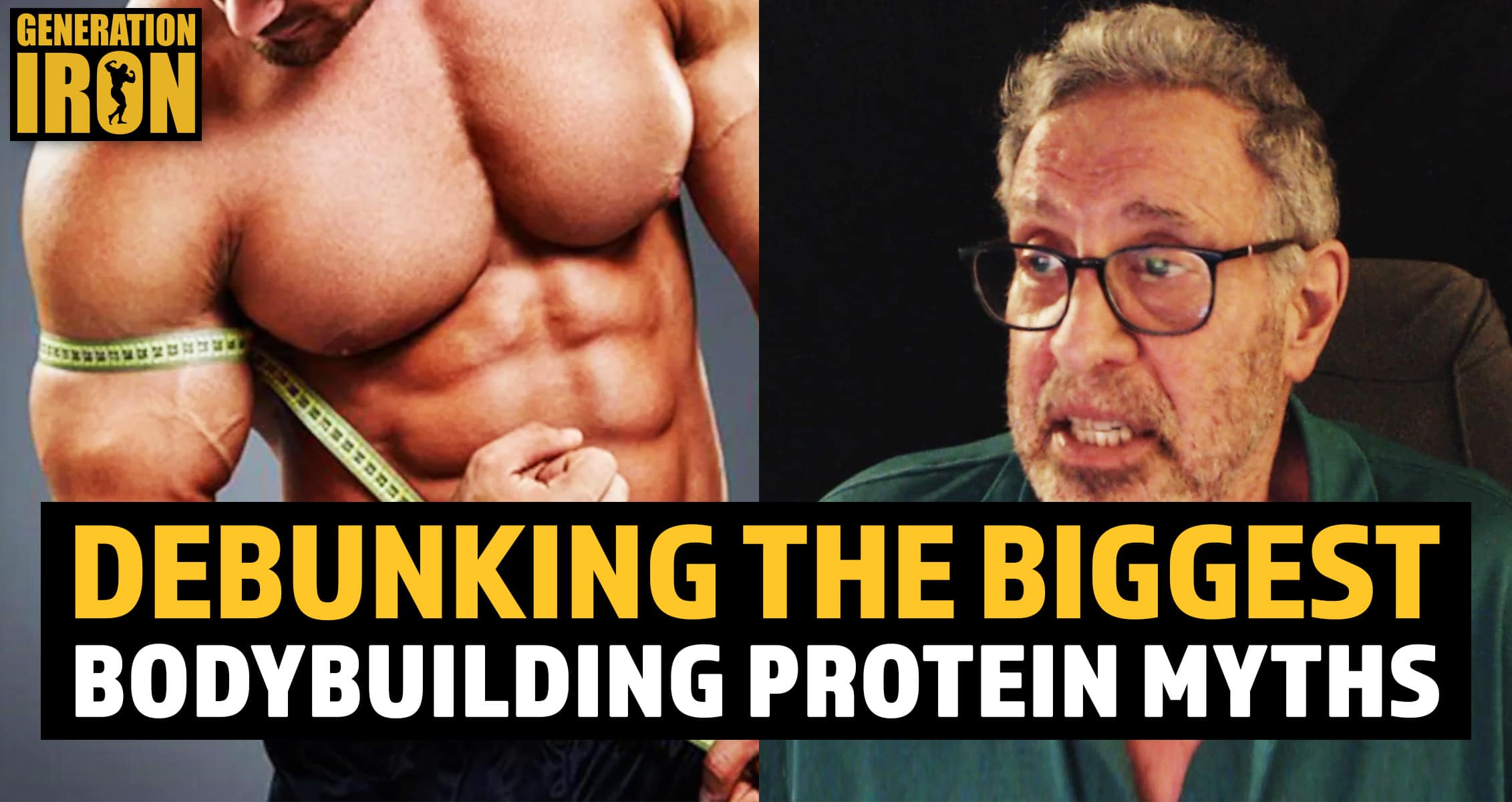
Straight Facts: Debunking The Biggest Protein Myths For Building Muscle
[embedded content]
Jerry Brainum debunks the biggest myths in bodybuilding regarding protein
Protein is the foundation of building muscle in bodybuilding. It’s the most basic knowledge an aspiring bodybuilder learns upon taking up weight training. However, despite this foundational knowledge, over time there have been many myths that unnecessarily complicate things when it comes to determining the correct diet for your bodybuilding needs. In our latest episode of Straight Facts, Jerry Brainum highlights the biggest protein myths prevailing in fitness today – and debunks them once and for all.
As with all things involving diet and fitness, things have become let’s say… complicated needlessly. Fitness and diet culture is a big ticket item for businesses. Sadly, there are many diet plans and business models aimed to prey on those looking for ways to lose weight or gain muscle with bogus concepts or information. That’s why Jerry Brainum breaks down the biggest myths and uses researched studies and science to clear the air.
You can watch his full video episode above. But et’s also recap the biggest protein myths below.
MYTH: Protein destroys your kidneys
Jerry Brainum explains that this misconception was based on a study done into kidney failure and protein intake. But the issue with the study is the fact that the test subjects were people who already had existing kidney failure (to the point where they are already on dialysis).
So yes, if you have kidney issues already, you need to be careful about protein intake. But Jerry Brainum warns that it’s a mistake to expand this out to the larger public. Kidney problems that have contributed to health dangers or death is less likely due to protein intake but drug use by bodybuilders.
MYTH: Protein causes a loss of calcium which leads to the loss of bone mass such as osteoporosis
Protein does have acids that are sulfur based. This is a fact that then led to the idea that high protein diets would cause calcium loss in bones. Jerry Brainum discusses a study that was done using pure protein. The results showed that, indeed, the pure protein led to a loss of calcium.
However, protein sources from food are never pure protein alone. In fact, even protein supplements are not pure protein. For example, most protein-based foods contain a mineral such as phosphate. Studies show that as long as phosphate is present, protein will not cause issue with calcium levels.
MYTH: Protein Makes You Fat
Eating too much protein does not need lead to weight gain. This was discussed in our previous episode of Straight Facts as well which explored weight loss myths. Jerry Brainum explains that the reasoning behind the myth is that protein contains calories. Basic knowledge tells us that too many calories will lead to weight gain. However, protein is oxidized in the liver when in excess. This is not converted into fat. While food that contains protein can have other nutrients that contribute to weight gain – protein itself will not increase fat.
MYTH: Protein Timing Windows
It was long thought that there was a “anabolic window” after training in the gym. This window would be vital to utilizing protein for optimal muscle mass growth. Typically, this window was consider to be 2 hours after a workout. However, studies have shown that protein synthesis actually peaks in 24-48 hours after workout. So forcing your protein intake right after a workout is rarely necessary.
Jerry Brainum does note that there is one exception. Some studies show that the more advanced you are, it would be a good idea to ingest protein within an hour after a workout. It’s slightly beneficial but nothing game changing.
MYTH: You Can’t Get Enough Protein On A Vegan Diet
Jerry Brainum calls BS on this notion. He believes that it is possible to get enough protein on a vegan diet… but it does take a lot more work. Essential amino acids are less complete in a vegan diet and would require additional supplementation and make sure you are eating the right kind of foods within the vegan wheelhouse. Additionally, vegan foods are often fibrous and can make you feel more full – making it harder to eat the amount of food necessary to get the protein you need.
MYTH: The More Protein You Eat The Bigger You Get
Jerry Brainum explains that more protein does not equal exponential increased gains. Of course eating the right amount of protein is important. This may require upping your protein intake as a bodybuilder. However, as was mentioned earlier, excess protein is oxidized by the liver. So it no longer contributes to help with muscle mass growth after a certain point. It won’t make you fat but it also won’t make you stronger/grow muscle mass.
MYTH: Everyone Needs A Protein Supplement
Jerry Brainum discusses how it’s a good idea for vegan bodybuilders to use protein supplements. But most people can get all of the protein they need on a regular diet easily. Supplements are convenient but not necessary for bodybuilding success if you can naturally eat enough food and enjoy doing so. You will not fail as a bodybuilder if you don’t use protein supplements.
However, if you find them to be more convenient for your lifestyle in order to achieve success, then they are an extremely helpful alternative. Just not 100% necessary.
Wrap up
The internet has made information far easier to obtain. Unfortunately, it has also made misinformation far faster and easier to spread. That’s why Jerry Brainum used this episode to focus on debunking the biggest myths he has seen discussed online. He does note, however, that the very nature of science is to know as much as we can right now. Things may change – and some beliefs can be proven false or true later with new studies or technology available.
Many of the myths on this list were once seen as fact by the scientific community. This doesn’t mean science is untrustworthy. It simply means to have an open mind and do constant research as time passes.
You can watch Jerry Brainum go into full detail in our latest episode of Straight Facts above. Make sure to also swing by every Wednesday for new episodes each week!
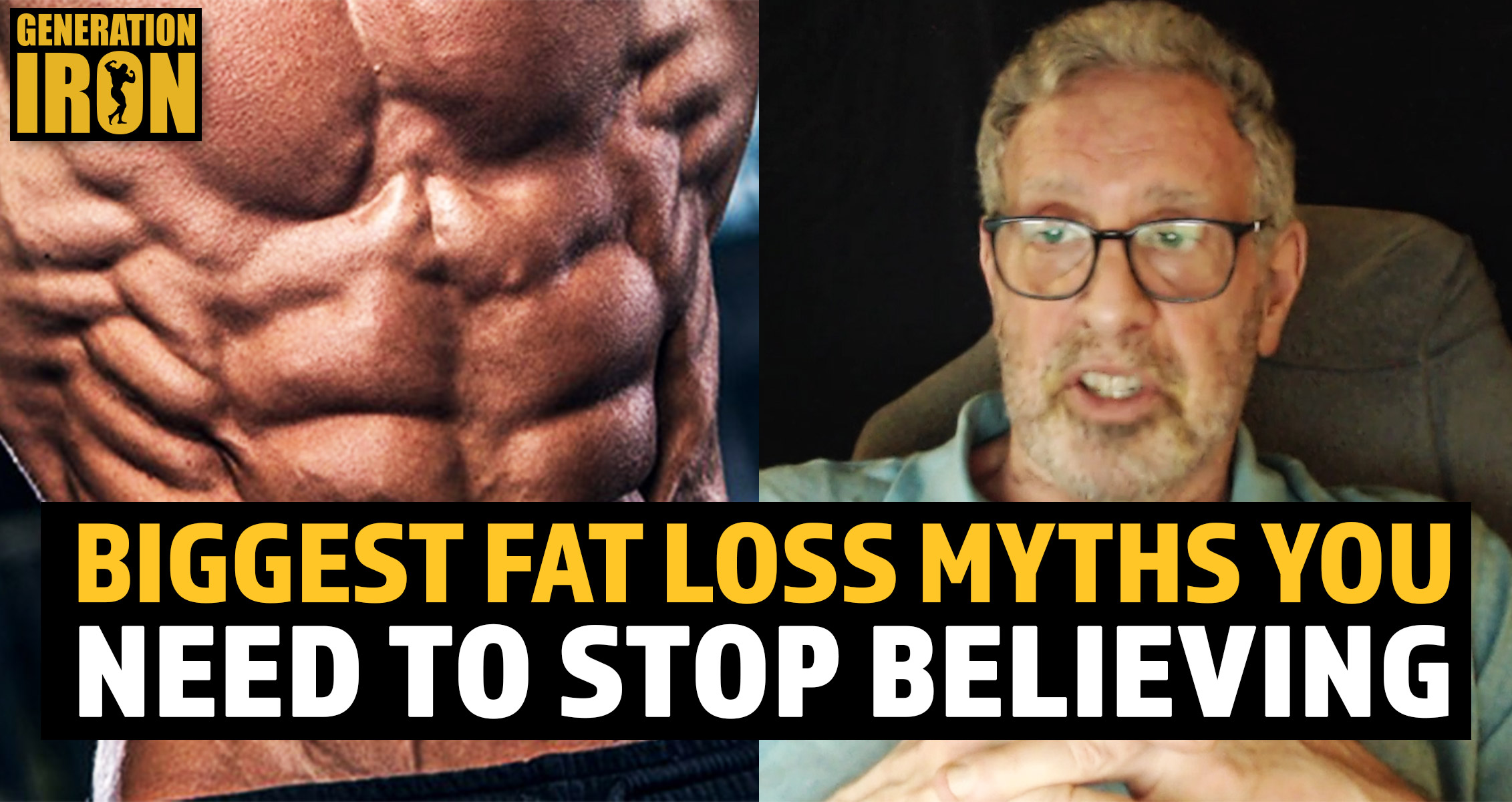
Straight Facts: Biggest Fat Loss Misconceptions & Mistakes
[embedded content]
Jerry Brainum gives the straight facts on the biggest myths in fat loss and how to avoid making these frustrating fat burning mistakes.
For many people across the world, weight loss is a nightmare. There is an entire industry and culture behind weight loss. Companies that attempt to sell you the next big trick to lose weight without the stress. Many are scams. Some are based in truth but oversold and oversimplified. But the mere existence of the fat loss industry showcases one painful truth – it is hard to lose weight for many individuals across the world. In our latest episode of Straight Facts, Jerry Brainum debunks the biggest fat loss myths and shares tips on how to avoid these big fat burning mistakes.
If you are someone who has either struggled to lose weight or focused on some sort of weight loss diet – you’ve likely heard all sorts of advice before. To simply it, there seem to be two schools of thought. One is the many complicated sciences and tricks into losing weight. These include fat loss products, nuanced diet trends, and sold nutrition programs like the Atkins diet or Weight Watchers.
The other school of thought boils it down to the simple basics. These people often say dieting is easy. Just eat less calories than your resting metabolic rate and you’ll drop fat. Easy, right? All you need is the will power to make it happen. It shouldn’t be complicated.
But the reality falls somewhere between these two extremes. The hard part is weeding through the crap to find out real helpful advice. That’s why we turned to Jerry Brainum to help debunk the biggest fat loss misconceptions and share tips using studies and facts on how to lose weight. Let’s jump into it with this overview of the biggest fat loss misconceptions.
1. Not all calories are created equal
One of the most basic strategies regarding weight loss is to consume less calories. While this is true in general, it’s also misleading. Different calorie sources go down different metabolic pathways.
Jerry Brainum explains that studies have long concluded that dietary fat contains more calories per gram than other nutrient sources. This has long lead to the believe that you should cut dietary fat for weight loss. But this is misleading.
In basic terms, Jerry Brainum uses the keto diet as an example. This diet asks you to cut carbs and replace with large amounts of dietary fat. The diet works (when done correctly). But based on pure calories alone this should not be the case due to the hight amount of calories per gram in dietary fat. This is just an anecdotal example of how not all calories are created equal.
In the video above, Jerry Brainum goes into more detail using studies that showcase the science behind this concept and why weight loss attached to calorie counting is more complicated than it seems.
2. Weight loss is not linear
There is also a generalized blanket statement made about fat loss. That if you cut 500 calories per day you’ll lose a pound per week and expand upon this linearly (1000 calories will lose you 2 pounds etc). This is not always true.
Jerry Brainum explains the concept of diet plateaus. This often happens after a few weeks of dieting successfully. A diet plateau happens often when your body realizes that your consuming less calories. Often times, cutting calories leads to bringing your daily caloric levels below what your body needs to function.
This is when your body goes into “starvation mode.” It begins pulling energy from other sources in your body, your metabolism slows down, and suddenly you stop losing weight.
3. Fat burner supplements will not directly burn fat
Fat burner supplements often advertise as miracle products that will help you lose fat without having to do anything else. This is not true. Studies have shown that fat burners don’t directly burn or oxidize fat. They help mobilize fat. So you often need to have a consistent exercise routine to make these products effective.
Related: Check out our review guide for the best Fat Burner supplements of 2022
4. Willpower is not the only factor in fat loss
There are those who believe that an overweight person simply has no willpower to eat healthy. This is not always true. Jerry Brainum explains that there are people with genetic disorders that will make it much more challenging to lose weight. For example, if you have low thyroid (hyperthyroidism) – you burn calories much slower than the average person. Even depression can lead to biological changes that slow down fat loss.
5. Exercise alone is not a good fat loss strategy
There are those who will jump on a bike or run for hours on end in the hopes of burning off the fat they ate for the day. This is not an effective strategy to lose weight. Jerry Brainum explains that over-exercising with cardio or aerobics will eventually lead to cannibalizing your muscles rather than burning fat.
On top of this, exercise is a much less effective way to burn fat than simply having a healthy or restricted diet. You would be surprised at how few calories an hour of running really burns.
6. Dietary fat does not always make you fat
This relates somewhat to item number one on this list. Especially in the past, dietary fat was seen as the enemy for weight loss. But this is not 100% true. There are many other nutrients such as carbohydrates (especially additive sugar) that contribute far more to gaining fat. As we mentioned above, diets like the keto diet are very effective in helping with fat loss and often involve a large amount of dietary fat.
7. Does healthy obesity exist?
This one is more controversial and currently being studied in more detail. For most of our modern existence, being obese was seen as being unhealthy. Jerry Brainum points out that many studies have shown that obesity leads directly to certain diseases (like type 2 diabetes) and ailments.
However, the culture is starting to shift into discussing the concept of healthy obesity. This comes from studies that show certain people who are categorized as obese have completely healthy bloodwork.
Jerry Bainum goes on to explain that this is currently a very controversial subject. Some doctors and scientists believe that, while an obese person can be healthy for some time, they will eventually suffer some sort of ailment in the long term. These ailments are harder to directly correlate due to the vast amount of other factors that may contribute. Even so, in today’s shifting culture, there has been a movement to promote “healthy fat” physiques.
The truth is this will likely require more studying before anything can be 100% concluded.
Wrap up
Jerry Brainum goes into far more detail and even more misconceptions and myths than we can discuss in this article. That’s why you should make sure to watch our latest episode of Straight Facts in full to become more informed on the biggest fat loss mistakes and how they can help you improve cutting fat. You can check it out above.
And don’t forget to check back in every Wednesday for new episodes of Straight Facts every week!
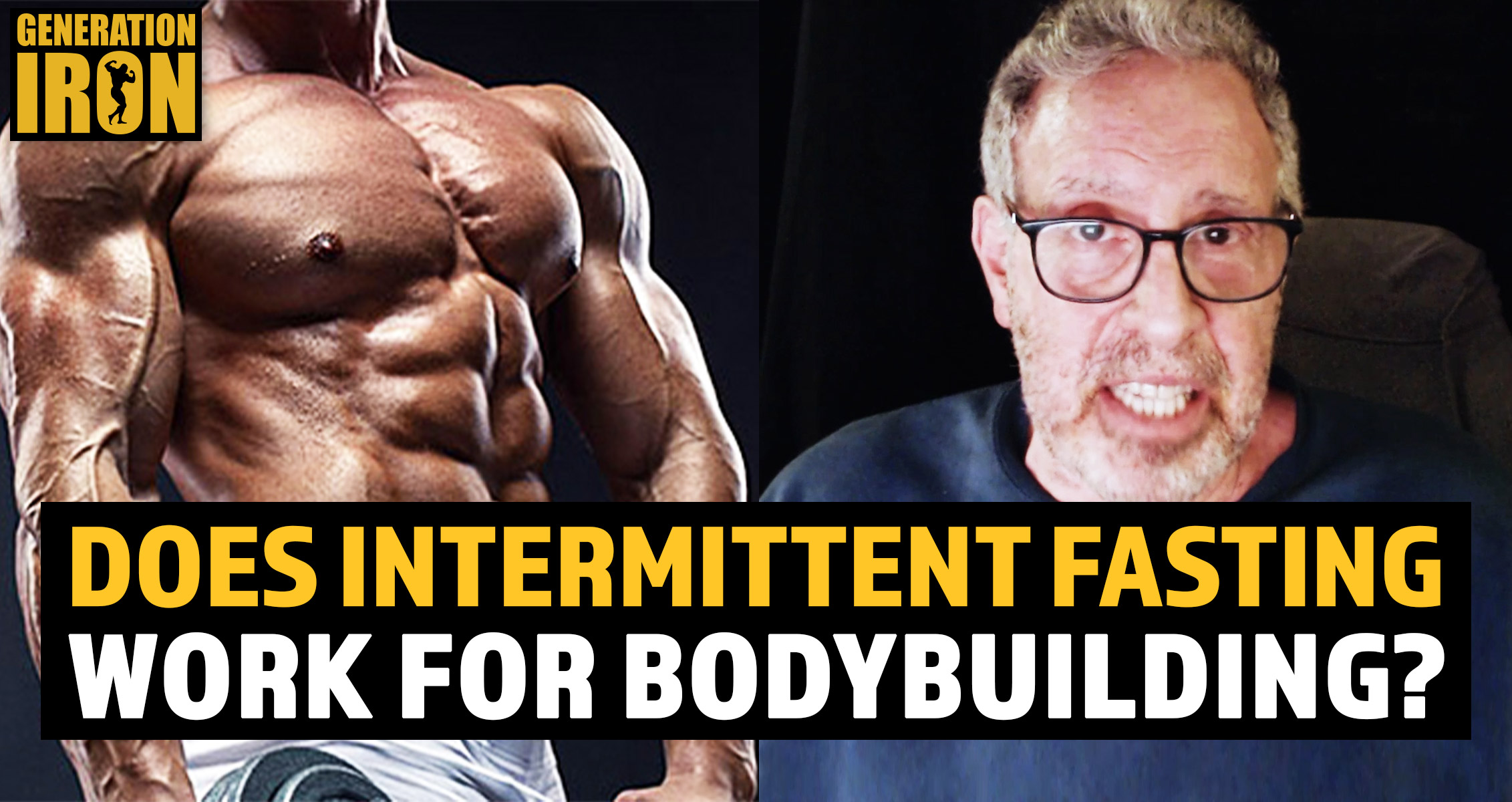
Straight Facts: Is Intermittent Fasting Effective For Fat Loss? Does It Lead To Muscle Loss?
[embedded content]
Jerry Brainum breaks down the pros and cons of intermittent fasting and whether it can fit into a bodybuilding lifestyle.
Intermittent fasting is one of the most popular diet trends of the moment. Perhaps it is even more than a simple trend. The intermittent fasting diet lifestyle has been talked about for nearly a decade at this point and has failed to lose steam. But is it really a more effective way to lose weight? And more importantly for bodybuilders, can it lead to burning away muscle? In our latest episode of Straight Facts, Jerry Brainum goes into detail about the pros and cons of intermittent fasting.
Jerry Brainum has in depth knowledge about many aspects of the diet and nutrition world. He has written countless articles on both in magazine publications and in his Applied Metabolics newsletter. Yet the one he keeps seeing most people asking for is more information about intermittent fasting. That’s how popular this dieting concept has become in modern health and fitness.
Despite Jerry Brainum having already written extensively on the subject – he decided to break down this full explainer video overviewing the pros and cons about intermittent fasting. A definitive recap of his past writings for those who are interested in understanding if this diet is right for them. Let’s jump into it.
What is intermittent fasting?
Jerry Brainum explains that intermittent fasting is short term regular fasting, typically for weight loss but also containing other health benefits. This typically takes the form of fasting for a period of time between 16-48 hours in regular intervals. Not only can this tactic put you into a caloric deficit depending on which intermittent fasting strategy you choose, it’s also designed to speed up your metabolism for the periods of time you do eat food (1).
Types of intermittent fasting
Jerry Brainum details various different intermittent fasting strategies that have gained popularity over the years. Which version an individual decides upon depends on the person’s goal and also what works best for their life schedule and psychological relationship to food and eating.
Here is a quick list of the most common intermittent fasting schedules:
16/8 – This is when you fast for 16 hours and then eat your full meals within an 8 hour period. This is done every day.
2 Day Weekend Fasting – this is when you eat normally Monday through Friday. On the weekend, you limit your calorie intake to 400-500 calories.
24 Hour Fasting – This is when you skip a full 24 hour of eating, once or twice a week.
Alternating Fasting – This is when you fast for a full 24 hours, then eat normally for a day, then fast for another 24 hours. This alternates every day of the week.
Does intermittent fasting improve weight loss?
Jerry Brainum also looks into past studies conducted on intermittent fasting and weight loss. Overall, intermittent fasting is seen by the public as a much more successful way to lose weight (2). However, studies have shown that intermittent fasting rarely improves weight loss compared to “traditional” calorie restriction diets.
Despite the fact that there is no scientific weight loss benefit to intermittent fasting, Jerry Brainum points out that it can be a more effective strategy psychologically. Sticking to counting calories every day for, basically, the rest of your life is very challenging for most individuals. Depending on a person’s mindset, intermittent fasting may be an easier way to achieve the same results. Thus leading to less failure scenarios where someone relapses into old eating habits.
Does intermittent fasting lead to muscle loss?
So the biggest question for bodybuilders is whether or not intermittent fasting will lead to burning muscle on top of the fat. Bodybuilders spend the entire year building massive muscle. To lose that in an attempt to cut down and get shredded would be devastating – especially for competitive bodybuilders looking to impress on the stage.
Jerry Brainum understands this concern but ultimately debunks this myth. Intermittent fasting is too short to lead to serious muscle loss. A fasted period would need to last at least 48 hours in order for muscle degradation to occur. The typical intermittent fast usually ranges between 16 and 40 hours at a time, preventing this issue.
However, it should be noted that trying to build muscle while intermittent fasting would be challenging. This is common sense, as usually muscle growth needs a caloric surplus to help build and repair muscle after serious training each day. At best, intermittent fasting should be utilized by bodybuilders during contest prep.
Health benefits of intermittent fasting
While intermittent fasting might only have the slightest advantage for losing weight, it has a more encouraging outlook in terms of improving overall health. Jerry Brainum explains that studies have shown intermittent fasting provides about 95% of the health benefits of traditional calorie restriction. So if intermittent fasting is easier for you than traditional dieting – this might be the perfect solution to improve your overall health.
Jerry Brainum lists through a wide range of health benefits from decreasing high blood pressure (3), preventing certain metabolic conditions, and also helping to potentially prevent certain degenerative diseases such as Alzheimers and dementia (4).
Jerry Brainum also points out that certain studies have found that intermittent fasting helps with easing the downsides of aging. In fact, this is the most key benefit studies have found in an intermittent fasting diet above all else.
Wrap Up
Jerry Brainum goes into extreme detail for just over thirty minutes about nearly every aspect of intermittent fasting. How it can be beneficial for the general public but also how it might intersect with a more hardcore bodybuilding lifestyle. You can watch him go into even more detail than we discuss in this article by watching the latest episode of Straight Facts above. Make sure to stick around every Wednesday for new episodes of Straight Facts starring Jerry Brainum!
References
Patterson, R.; et al. (2017). “Metabolic Effects of Intermittent Fasting”. (source)
Welton, S.; et al. (2020). “Intermittent fasting and weight loss”. (source)
Erdem, Y.; et al. (2018). “The effect of intermittent fasting on blood pressure variability in patients with newly diagnosed hypertension or prehypertension”. (source)
Zhang, J.; et al. (2017). “Intermittent Fasting Protects against Alzheimer’s Disease Possible through Restoring Aquaporin-4 Polarity”. (source)

Straight Facts: Understanding SARMs – Are They Safe? What Are The Real Risks?
[embedded content]
Jerry Brainum shares the straight facts about SARMs and the common misconceptions perpetuated around the unapproved substance.
There used to be a time when bodybuilding and pro sports were only associated with one key performance enhancing drug – steroids. Those days are gone. We now have athletes that use a wide array of PEDs. One of those is selective androgen receptor modulators – also known commonly as SARMs. This substance is often billed as providing the benefits of steroids without the side effects. But is that too good to be true? In our latest episode of Straight Facts, Jerry Brainum explains everything you need to know about SARMs including the risks and misconceptions behind the relatively new substance.
SARMs (selective androgen receptor modulators) are less commonly known to the mainstream public in comparison to steroids. They are also not as strictly illegal as steroids are for athletic use. At least, when you get down to the fine print of it all. But SARMs are still a very powerful drug with a big grey area surrounding them in terms of health and safety. In fact, despite appearing safer, there are currently no SARMs approved by the FDA in the United States. So it is impossible to get a legal SARM product as a consumer.
Jerry Brainum understands that athletes such as bodybuilders are always going to take risks. He is not going to tell you what drugs you should or shouldn’t take. But he does feel a responsibility to help inform the public about the facts behind these substances. Far too often, a bodybuilder or athlete will take a substance like SARMs without realizing exactly what is being put in their body.
What are SARMs?
Simply put, Jerry Brainum explains that SARMs are a substance that directly affects the androgen receptors in your body. The invention of selective androgen receptor modulators was to find a solution to the side effects caused by steroids. Of course, we aren’t talking about this in regards to performance enhancement. Scientists were trying to find a solution to legally prescribed steroids for patients who suffer unfortunate side effects.
Eventually these studies and experiments led to the creation of SARMs as we know them today. It’s part of the reason they are promoted as having the power of steroids without the side effects. However, this is somewhat misleading. Due to the fact that SARMs were never approved by the FDA – there is a big grey area as to how these substances really affect the human body.
The side effects of SARMs: Are they safe?
The frustrating reality about SARMs is that there are not many extensive studies on these substances. Much like steroids or marijuana – it’s unapproved status puts limits on what scientists can do when it comes to clear cut studies. However, there are some points to consider and some case studies that can be referred to for insight.
Jerry Brainum starts off by explaining the inherent dangers of buying SARMs come from the fact you cannot buy them legally in the United States. This means that any SARM you buy online will be made on the black market. These labs do not have to hold themselves accountable to the standards set by the FDA. This means you don’t really know what you are getting in the product.
Jerry Brainum cites a study that purchased 20-25 different SARM products. They then studied the contents of each drug to determine the validity of the substance. In the end, it turned out that 50% of the substances purchased were either contaminated (or cut) with alternate substances. Some of the substances were even completely different drugs and contained no SARMs at all within them.
This is a massive risk. Much like other illegal designer drugs such as ecstasy, heroine, etc – buying a drug like SARMs via illegal means can lead to unintended consequences. Best case scenario you get a weaker or inert version of the SARM. Worst case you get something poisonous in your system that harms your health or is even lethal.
What makes this even worse is that many companies that are illegally selling SARMs online advertise themselves as a safe alternative to steroids. Not only is this inherently not true due to the black market nature of buying them – but there are some case studies that suggest that even pure SARMs are not as safe as advertised.
Jerry Brainum details another case study that mentioned potential side effects, including effects on the heart, that seem to be tied to SARMs. Again, there are less than ideal long term studies done to truly prove this. But a case study acts as a “what if” scenario. Perhaps not everyone will face side effects from SARMs – but it’s possible due to the information revealed in these case studies.
Just like you want to do research on a car before you buy it – SARMs need more rigorous research before they can be confidently proclaimed safe.
Wrap Up
Jerry Brainum goes into far more detail about SARMs, including scientific definitions and further breakdowns of case studies. Far more information than we can cover here in this article. So make sure to check out the latest episode of Straight Facts above – and decide for yourself if SARMs are a risk you want to take.
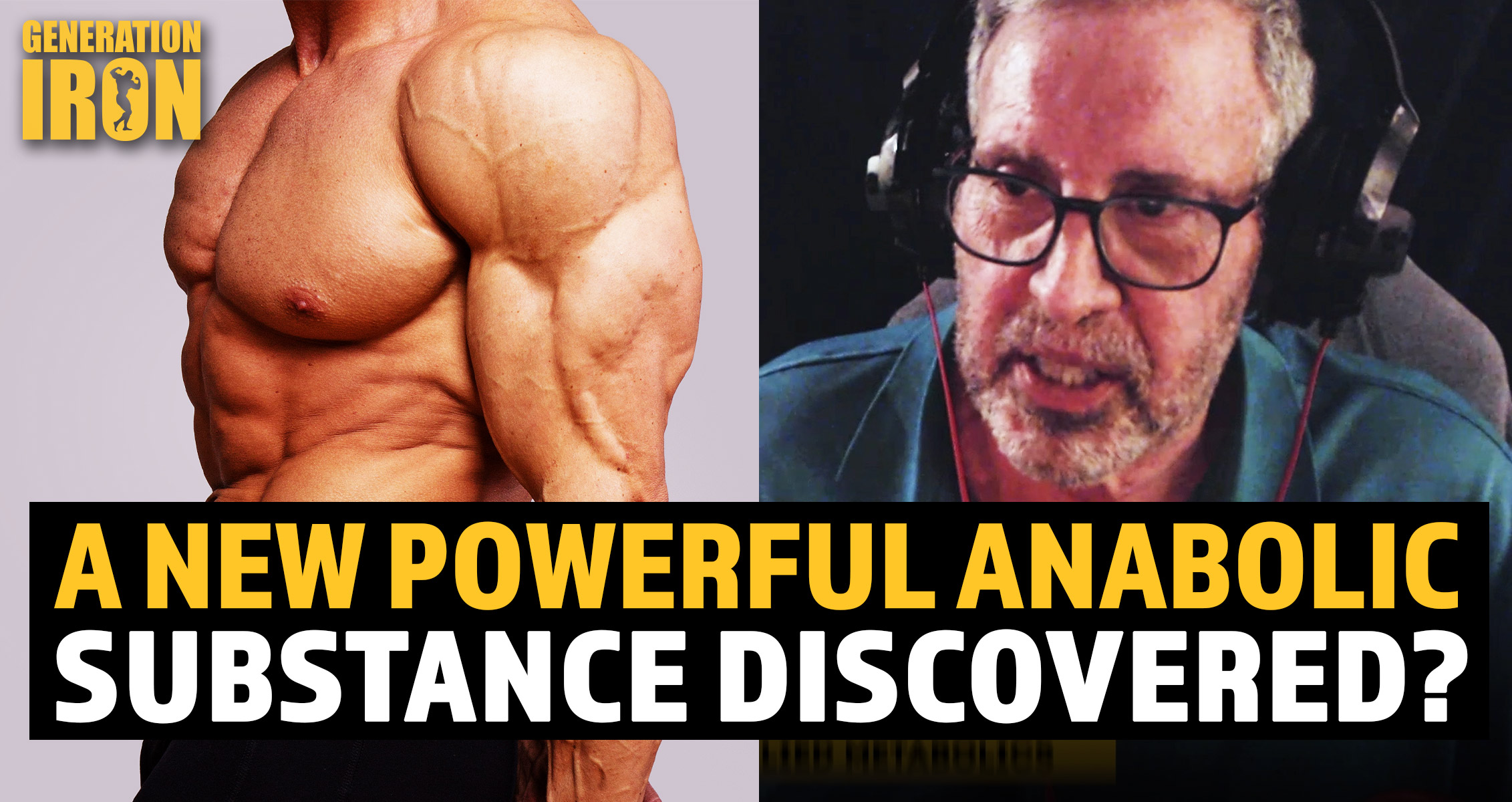
Straight Facts: Is Lemon Myrtle The Most Anabolic Supplement Ever Discovered?
Jerry Brainum shares the straight facts on a new discovery that may prove to be one of the most anabolic natural substances in existence.
Those who are interested in pushing their body to the limits of muscular ability are always trying to find ways to enhance their progress. Some will turn to PEDs for this enhancement, while others will try and stay on the legal side of things and look for approved substances for enhancement. While neither of these can replace hard work in the gym – they can supplement and optimize the results of hard work. A recent scientific study may have just introduced a new natural supplement that could change the game for natural anabolic substances. In our latest episode of Straight Facts, Jerry Brainum breaks down Lemon Myrtle and how it can optimize muscle hypertrophy.
Science is evolving every single day – and this has had a drastic affect on bodybuilding and fitness. If you were to compare the methods and knowledge of bodybuilders in the 70s vs today – you would see major differences. This, in part, explains why physiques are so much more massive than the golden era. For those not deeply embedded in bodybuilding, you can also see this difference in how nutrition and a healthy diet is directed vs nutrition in the 1950s, for example.
Of course, science is not only evolving it is also changing. Some things that were once seen as beneficial turns out to be false with further long term studies. So the following information that Jerry Brainum presents should be taken with a grain of salt – as it is a new study that can have big implications for the supplement and bodybuilding world.
This week, Jerry Brainum breaks down a recent study that explores the substance Lemon Myrtle. This is a plant whose compound might make it the most anabolic natural substance in existence. As Brainum explains, Lemon Myrtle might be the first natural substance to directly activate satellite cells – which are an instrumental part of hypertrophy.
How does muscle hypertrophy work?
Before jumping into this new substance, Jerry Brainum recaps how muscle hypotrophy works. Brainum covered muscle hypertrophy in more detail in a separate earlier episode of Straight Facts – which you can watch here. But as a brief rundown – here’s the key details.
Within muscle fibers, there are something known as satellite cells. These cells essentially just sit around doing nothing, until your muscle fibers are damaged. Once this happens, your satellite cells begin work on repairing your muscle. This act of repair also restores your muscle with larger fibers than before – thus leading to increased strength and size.
It should be noted that there is some debate on how essential satellite cells are to muscle hypertrophy and repair. A minority group of scientists believe that they might have little to do with the process. But as of today, majority fall more in favor with satellite cells being vastly important in the process – using peer reviewed studies to back it up.
The Lemon Myrtle Study: Older age, sarcapenia, and satellite cells
Sow how did lemon myrtle become discovered as a powerful supplement for muscle hypertrophy? Jerry Brainum explains that a recent study was done to find natural substances to aid in reducing sarcapenia.
What is sarcapenia? It’s a disorder that usually happens in adults 60 years and older. It’s a natural occurrence of the human body’s satellite cells dying off as we reach elderly age. This eventually leads to your muscles atrophying at a faster rate. It’s the reason why light resistance training is so important in older age – as this helps prevent and slow this process down.
Jerry Brainum asserts that many elderly folks who find themselves in assisted living homes are not due to mental disorders, but more so from frailty due to sarcapenia. You all know the “Help, I’ve fallen and I can’t get up!” commercials. This is essentially the end results of sarcapenia, requiring assisted living help for movement and support.
In an attempt to find natural substances that aid in preventing or slowing sarcapenia, scientists discovered that Lemon Myrtle does something that no other natural substance has been able to do – it directly activates satellite cells. This led the study to conclude it can be helpful as a supplement for elderly folk to prevent frailty.
But Jerry Brainum believes that Lemon Myrtle can also be used by any adult to help activate satellite cells and improve muscle hypertrophy. It can, essentially, be the most effective natural anabolic supplement in existence.
The studies are new and have not yet been tested on human subjects (only in vitro and also in mice). So it remains to be seen in the long term just how much of a game changer (or not) the substance can be. However, Jerry Brainum states that he wouldn’t be shocked to start seeing Lemon Myrtle as a supplement or as an ingredient in anabolic supplement blends.
Wrap Up
As science constantly evolves, so too do our options in bodybuilding for further optimization of training and nutrition. This allows athletes to push the boundaries even further than before. While Lemon Mrytle will not replace anabolic steroids or other PEDs – it can be a vital and game changing natural supplement in the world of fitness. You can watch Jerry Brainum break it down in complete detail by watching our latest episode of Straight Facts above.
